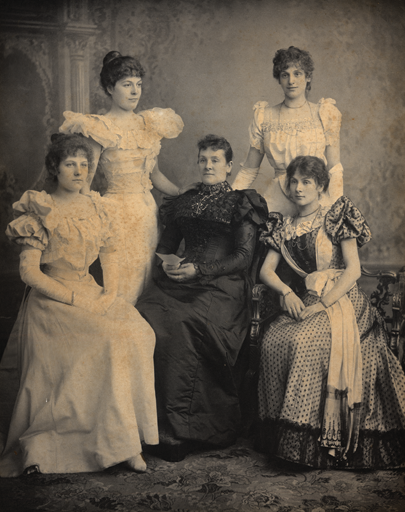Good vibrations
In CPD modules
Follow this topic
Bookmark
Record learning outcomes
When even today 'women's problems' are spoken about in hushed tones, Steve Ainsworth asks how much more difficult must it have been in days gone by?

Though the days are long past when underwear was hung out to dry inside pillowcases pegged to the washing line, folk are still reluctant to talk out loud about personal matters. How much more difficult, then, it must have been in the days of Queen Victoria to discuss intimate problems with a doctor or pharmacist.
The Queen herself led the field when it came to prudishness. Only after her death did her personal physician, Sir James Reid, discover that for many years she had suffered from a prolapsed uterus.
But not every Victorian woman can have been quite so coy, not least when it came to the treatment of hysteria.
It was the father of medicine, Hippocrates, who coined the word 'hysteria'. The word derives from the Greek for uterus. Though in Hippocratic terms all gynaecological diseases are hysterical, the modern narrow meaning of the word is the product of nineteenth- century reinterpretation of the Hippocratic corpus. In fact, a better word for an hysterical frenzy might instead be 'oestreia'. This word, like oestrogen, is derived , from the Greek 'oistros', which is a fly that infests cattle, maddening them into stampeding.
A fashionable diagnosis
Regardless of its etymology, by Victorian times nervous hysteria had become an increasingly fashionable diagnosis. Though by the 1950s the very existence of hysteria as a specific disease would be dismissed by the medical profession, nevertheless for centuries doctors believed that hysteria was a symptom of the womb's adverse reaction to sexual deprivation.
From countless dramatic scenes on stage and screen one might guess that the preferred prescription for hysteria has always been a sharp slap cross the face. But not so. Intimate massage was the standard treatment, with the objective to induce 'hysterical paroxysm'.
In the mid 17th century doctors were being recommended to apply the following treatment to hysterical women: 'We consider it necessary to ask a midwife to assist so that she can massage the genitalia with one finger inside using oil of lilies, musk root, crocus or something similar. And in this way the afflicted woman can be aroused to paroxysm... most especially for widows, those who live chaste lives, and female religious...It is less often recommended for very young women, or married women, for whom it is a better remedy to engage in intercourse with their spouses.'
By the 19th century, however, doctors were increasingly dismissing midwives and undertaking this task themselves. Happily, however, science was on hand to relieve doctors of this awkward burden. A clockwork vibrator, or 'tremoussoir', had been invented in France in 1734 and was available from all reputable medical appliance suppliers by the 1750s. Unhappily, the device was not only expensive but also had a tendency to run down before the treatment was complete.
Doctors were soon trying other strategies for therapeutic arousal: patented rocking chairs, a swing, and vehicles that bounced their patients rhythmically on their pelvises.
Hysteria epidemic
With hysteria reaching epidemic proportions in the mid-19th century it became apparent that the most modern technology would have to be applied to the problem.
Dr George Taylor was the American inventor of the steam-powered vibrator. The apparatus was called the 'Manipulator' and patented in 1869. It featured a small steam engine which fitted 'discreetly' underneath a specially designed examination couch. It was explicitly marketed as a device for massaging the pelvic and abdominal areas in order to cure 'female disorders'.
Like its predecessor, this device was expensive, and so was bought mainly by health spas, to which the wealthier sort of hysterical female could resort. The device
came with a stern warning to avoid 'over- manipulation'.
Not to be outdone by America, the British bounced back in 1883 when Dr Joseph Mortimer Granville created the first electro- mechanical massager, the 'Perceteur'. Granville innocently intended his device to be used solely to massage muscles: he was not a believer in the use of vibrating devices for inducing 'hysterical paroxysm'. The technology, however, quickly proved to be adaptable.
In the years between the appearance of Granville's battery-powered Perceteur and the end of the 19th century, more than a hundred similar medical devices appeared on the market, sold through appliance suppliers and chemists.
Before very long such devices were also being marketed in women's magazines and mail order catalogues: carefully worded adverts promised women 'health, vigour and beauty'.
But by the 1920s, thanks largely to the work of Sigmund Freud, doctors were abandoning physical treatments for hysteria in favour of psychotherapy. And around the same time the startling discovery was made that some women appeared be using electro- mechanical devices for non-clinical purposes.
The discrediting of the uterus-based theory of hysteria was now matched by the discrediting of massage devices as therapeutic aids in its treatment. What had been an OTC product now became something kept strictly under the counter €“ if sold at all.
How times change! Nine decades on vibrating devices designed solely for recreational use have come out from under many pharmacists' counters and have made their way onto the open shelves.
But would Queen Victoria have been amused? More likely she'd have had hysterics!
